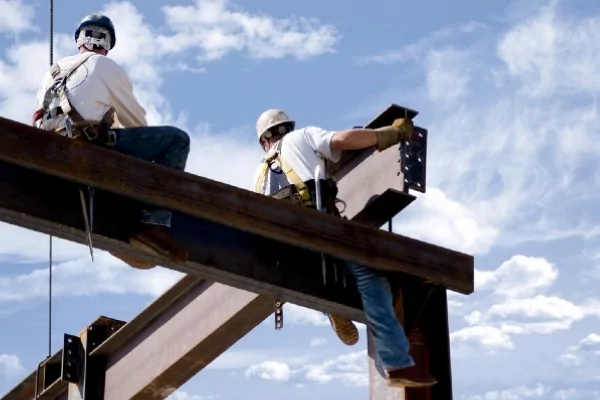The role of BIM in improving construction safety
We would like to start by painting a picture. India's construction industry contributes the most to India’s economy, just behind agriculture. It's also the second-largest in terms of employment and provides thousands of jobs around the country. According to estimates provided by the government, the construction industry has grown by 80% over the past 4 years and has gone from generating $78 billion in 2013, to around $140 billion in 2017. Explosive growth is great, but growth should also come to greater social consciousness. And sure enough, an aspect that is getting ever-more attention is the safety of construction workers and safe practices on construction sites.
It is, unfortunately, true that each year, many workers die on construction sites, either due to falls, electrical mishaps, or accidents at the workplace. The labor Ministry figures (reported by NDTV) show that 450 workers were killed and 212 injured on site in 2013. Between 2013 and 2016, the numbers almost doubled, to 1,092 deaths and 377 workers injured.
A sector that’s as relevant and promising as real estate must include better safety regulations. We believe that technology and innovation can solve many problems, and Building Information Modelling (BIM), in particular, has a lot of potentials to solve many problems. Let's take a look at how BIM can help improve construction safety.
Focus on innovation in safety
When it comes to construction, the most effective forms of safety programming occur during the planning and preconstruction phases of a project. Till recently, pre-construction safety improvement techniques, such as designing for safety (DfS) have faced many issues which are caused due to design flaws. What BIM does is that it allows the opportunity to detect and predict hazards from an early stage. It's a collaborative effort because our designers need to be aligned with all the other project stakeholders to identify, isolate, and fix the hazards and risks early.
Leveraging data to improve safety at the pre-construction level
BIM can effectively make use of data to improve safety at various stages. Risk analysis and safety evaluations that would previously only be carried out at the site can now be automated, thanks to BIM. Designers are able to identify hazards way before they come into play. The design-driven storage and indexing of documents and certificates make referencing a lot easier. This allows designers to plan out their safety measures with greater precision and in accordance with all the regulations and compliance mandates.
Visualisation and prediction
One of the very cool applications of BIM is that it allows you to configure the digital information so that one can preview a range of potential (what-if) scenarios. Consider how useful it would be to do this with reference to health, safety, and hazards. Designers are able to play out all kinds of scenarios so that when it's time to construct, everything is in place and one is well prepared.
Advantages of BIM on-site
The superior material-planning abilities of BIM allows us to fully utilize the prefabrication of materials off-site, in a highly safe and controlled way. It also facilitates automated compliance checking, which means that one can swiftly check if everything is up to mark in terms of regulations with little effort. Scenario-planning once again comes into play, where BIM becomes the fundamental blueprint for the contractor on-site.
Training workers in safety
Most construction workers in India are from low-income backgrounds and are mostly uneducated. This means that there is sometimes a language barrier when it comes to communicating rules, regulations, and best practices. BIM's ability to communicate information visually and in an interactive manner can be leveraged to visually showcase critical elements, plans, and developing situations. This helps ensure that the workers get a better training experience and are better prepared for any kind of scenario.
Reduction of rework
Since BIM has a holistic approach, it factors in everything, from electrical plans to plumbing and everything else. This means that there is greater synergy between teams and very few clashes between tasks. Fewer clashes mean less rework and also a reduction in accidents that may occur when people onsite try to find “on the fly” solutions to address such clashes.
The role of advanced tech within the BIM framework
BIM also mixes well with futuristic technology such as simulation, augmented reality, and virtual reality. Not only do these help provide a better user experience, but they also help to visualize forthcoming challenges better and to plan better to reduce the risks on site.
It is said that during the design of the empire state building in New York, the design team infamously allowed for 'one death per floor' in the report for the project. During the construction, “only” seven people lost their lives which was actually viewed as a good thing. In an age where technology can be used to enhance almost every aspect of our life, it is time that we use it for the betterment of all, including the staff on the construction site. The real estate industry is beginning to embrace modern technology to make the process of construction more efficient, faster, and resource-conscious. We suggest that technology should also play a role in improving construction safety.

